A Comprehensive Guide to Cannabis Plant Nutrient Deficiencies and Solutions
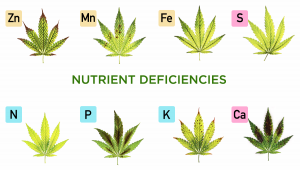
- 1. Introduction to cannabis plant nutrition
- 2. Essential nutrients for cannabis growth
- 3. Identifying and treating nutrient deficiencies
- 4. Common symptoms and solutions for nutrient deficiencies
- 5. Preventing nutrient deficiencies and imbalances
- 6. The role of macro and micronutrients in cannabis plant growth
- 7. Nutrient deficiency symptoms and treatments (expanded)
- 8. Nutrient interactions and their effects on cannabis plant health
- 9. Nutrient availability and the importance of soil ph
- 10. Nutrient deficiency identification and correction strategies
- 11. The role of plant genetics in nutrient uptake and deficiencies
- 12. Nutrient deficiency recovery and the importance of timely intervention
- 13. The impact of nutrient deficiencies on cannabis yield and quality
- 14. Organic vs. synthetic fertilizers for cannabis plant nutrition
- 15. The importance of proper watering and irrigation for nutrient uptake
- 16. Closing thoughts
In this comprehensive guide, we will dive deep into understanding cannabis seeds' plant nutrient deficiencies, how to identify them, and how to treat them to ensure a healthy and bountiful harvest. Our goal is to provide you with valuable insights and practical solutions to help you achieve optimal cannabis growth.
Introduction to Cannabis Plant Nutrition
Cannabis plants, like all living organisms, require a specific set of nutrients to grow and thrive. A balanced diet of macro and micronutrients is crucial for the proper growth and development of cannabis plants. When these essential elements are lacking or imbalanced, nutrient deficiencies occur, leading to a range of symptoms that can impact the overall health and yield of the plants.
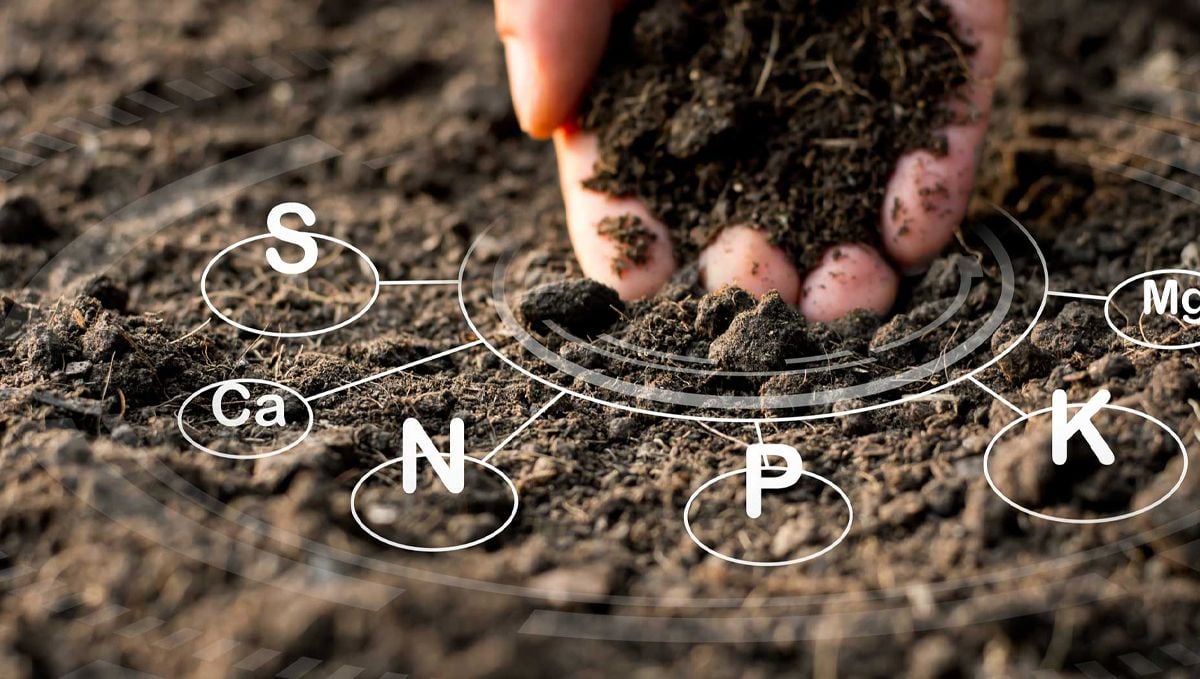
Understanding the nutritional needs of cannabis plants and identifying the signs of nutrient deficiencies is vital for every grower. This knowledge will help you adjust your feeding and care practices to maintain the health and vitality of your plants.
Essential Nutrients for Cannabis Growth
Cannabis plants require a mix of macro and micronutrients for optimal growth. These essential nutrients play a critical role in various biological processes that contribute to the overall health and productivity of the plants.
Macronutrients
Macronutrients are considered the primary nutrients because they are required by cannabis plants in larger quantities. They include:
- Nitrogen (N): Nitrogen is vital for cannabis plant growth, as it is a key component of chlorophyll and amino acids, which are essential for photosynthesis and protein synthesis.
- Phosphorus (P): Phosphorus plays a crucial role in energy transfer and storage within the plant, promoting strong root development, flowering, and seed production.
- Potassium (K): Potassium aids in various plant processes, such as regulating water balance, activating enzymes, and supporting overall plant health.
Secondary Nutrients
Secondary nutrients are also required for optimal plant growth but in significantly smaller amounts than macronutrients. They include:
- Calcium (Ca): Calcium is essential for cell wall structure and strength, nutrient transport, and enzyme activation.
- Magnesium (Mg): Magnesium is a vital component of chlorophyll, helping with photosynthesis, and is involved in enzyme activation and energy transfer.
- Sulfur (S): Sulfur is a crucial element for the production of amino acids, proteins, and enzymes, as well as contributing to the synthesis of essential oils and terpenes.
Micronutrients
Micronutrients are required in trace amounts but are still essential for the proper functioning and health of cannabis plants. They include:
- Iron (Fe): Iron is necessary for chlorophyll synthesis and is involved in various enzyme reactions.
- Manganese (Mn): Manganese aids in chlorophyll production and is involved in enzyme activation and the synthesis of proteins.
- Zinc (Zn): Zinc is essential for enzyme activation, protein synthesis, and growth regulation.
- Copper (Cu): Copper is vital for chlorophyll production, enzyme activation, and plays a role in the synthesis of proteins and plant defense mechanisms.
- Boron (B): Boron is crucial for cell wall structure, cell division, and the proper functioning of plant hormones.
- Molybdenum (Mo): Molybdenum is essential for nitrogen fixation and is involved in various enzyme reactions.
- Chlorine (Cl): Chlorine aids in osmosis, the ionic balance of cells, and plays a role in photosynthesis.
Identifying and Treating Nutrient Deficiencies
Recognizing and addressing nutrient deficiencies in cannabis plants is critical to ensure their health, and maximize quality and yield.
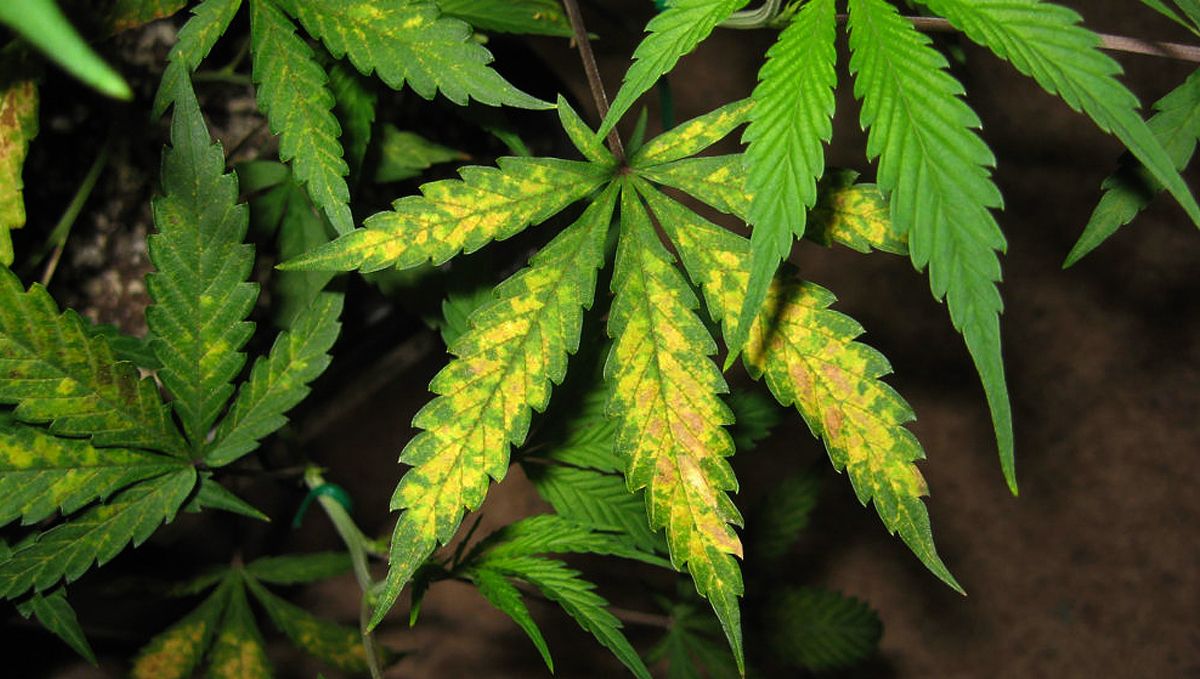
Here, we will discuss some of the most common nutrient deficiencies, their symptoms, and how to treat them.
Nitrogen Deficiency
Symptoms: Nitrogen deficiency typically manifests as yellowing of the lower leaves, which may progress to the entire plant if left untreated. Leaves may become pale and eventually fall off.
Treatment: To address nitrogen deficiency, increase the amount of nitrogen in your feeding regimen. Use a balanced fertilizer with a higher nitrogen ratio, such as a 3-1-2 NPK formula. Monitor the plant's response and adjust as needed.
Phosphorus Deficiency
Symptoms: Phosphorus deficiency can cause slow growth, dark green leaves, and reduced flowering. Leaves may display purple or red hues and may eventually become necrotic and fall off.
Treatment: Increase the amount of phosphorus in your feeding regimen by using a fertilizer with a higher phosphorus ratio, such as a 1-3-2 NPK formula. Monitor the plant's response and adjust as needed.
Potassium Deficiency
Symptoms: Potassium deficiency can cause leaf edges to turn yellow or brown and curl upward. The affected leaves may also display chlorosis or necrotic spots and can become weak and brittle.
Treatment: Increase the amount of potassium in your feeding regimen by using a fertilizer with a higher potassium ratio, such as a 2-1-3 NPK formula. Monitor the plant's response and adjust as needed.
Calcium Deficiency
Symptoms: Calcium deficiency can cause leaf tips and margins to turn brown and curl, stunted growth, and weak stems. In severe cases, it can lead to root rot and blossom end rot in flowers.
Treatment: Increase the amount of calcium in your feeding regimen by using a calcium-rich fertilizer or supplement. Additionally, ensure the pH of your growing medium is within the optimal range (6.0-6.5) to improve calcium uptake.
Sulfur Deficiency
Symptoms: Sulfur deficiency can cause stunted growth, yellowing of young leaves, and poor flower development. Leaves may also become brittle and develop necrotic spots.
Treatment: Increase the amount of sulfur in your feeding regimen by using a sulfur-rich fertilizer or supplement. Monitor the plant's response and adjust as needed.
Iron Deficiency
Symptoms: Iron deficiency is characterized by interveinal chlorosis in young leaves, which may progress to the entire plant if left untreated. Leaves may also display necrotic spots and can become weak and brittle.
Treatment: Increase the amount of iron in your feeding regimen by using an iron-rich fertilizer or supplement, such as chelated iron. Additionally, ensure the pH of your growing medium is within the optimal range (6.0-6.5) to improve iron uptake. Monitor the plant's response and adjust as needed.
Manganese Deficiency
Symptoms: Manganese deficiency can cause interveinal chlorosis in young leaves, which may progress to the entire plant if left untreated. Leaves may also display necrotic spots and can become weak and brittle.
Treatment: Increase the amount of manganese in your feeding regimen by using a manganese-rich fertilizer or supplement. Additionally, ensure the pH of your growing medium is within the optimal range (6.0-6.5) to improve manganese uptake. Monitor the plant's response and adjust as needed.
Magnesium Deficiency
Symptoms: Magnesium deficiency is characterized by interveinal chlorosis, starting with the lower leaves and progressing upward. Leaves may also display red, purple, or brown spots and curl upward.
Treatment: Increase the amount of magnesium in your feeding regimen by using a magnesium-rich fertilizer or supplement, such as Epsom salts. Monitor the plant's response and adjust as needed.
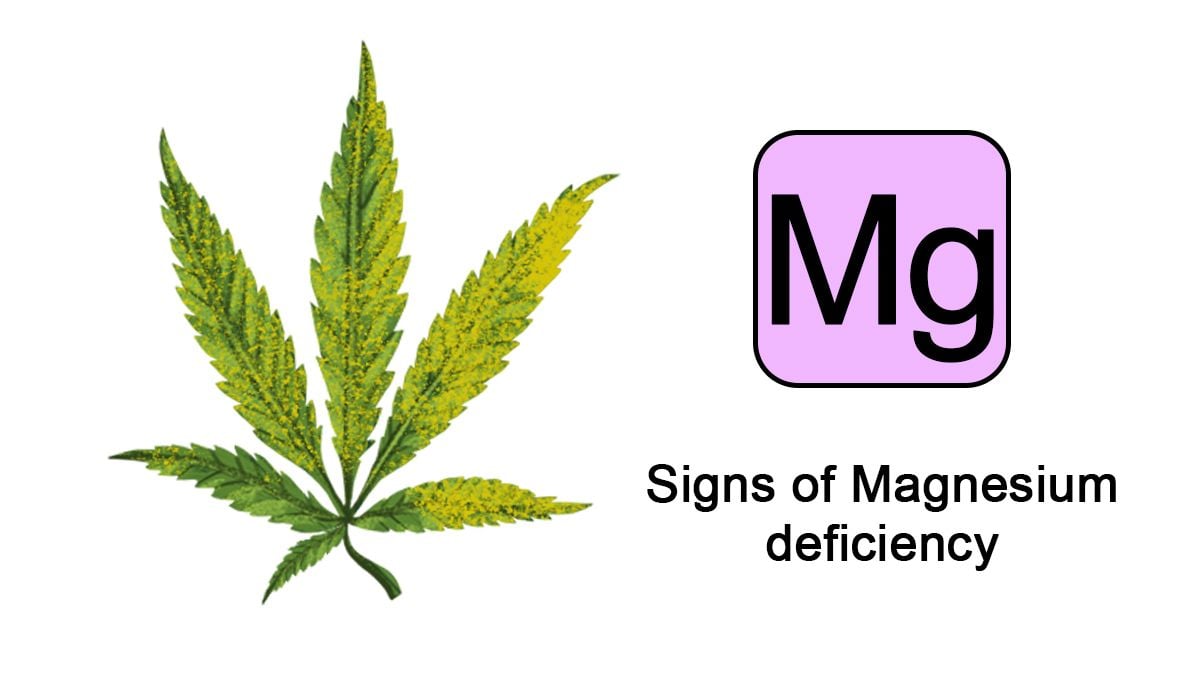
Zinc Deficiency
Symptoms: Zinc deficiency can cause stunted growth, interveinal chlorosis, and leaf deformation. Leaves may also display necrotic spots and can become weak and brittle.
Treatment: Increase the amount of zinc in your feeding regimen by using a zinc-rich fertilizer or supplement. Additionally, ensure the pH of your growing medium is within the optimal range (6.0-6.5) to improve zinc uptake. Monitor the plant's response and adjust as needed.
Copper Deficiency
Symptoms: Copper deficiency can cause stunted growth, leaf curling, and chlorosis. Leaves may also display necrotic spots and can become weak and brittle.
Treatment: Increase the amount of copper in your feeding regimen by using a copper-rich fertilizer or supplement. Additionally, ensure the pH of your growing medium is within the optimal range (6.0-6.5) to improve copper uptake. Monitor the plant's response and adjust as needed.
Boron Deficiency
Symptoms: Boron deficiency can cause stunted growth, leaf curling, and chlorosis. In severe cases, it can lead to necrosis and deformation of the growing tips.
Treatment: Increase the amount of boron in your feeding regimen by using a boron-rich fertilizer or supplement. Monitor the plant's response and adjust as needed.
Molybdenum Deficiency
Symptoms: Molybdenum deficiency can cause leaf curling, chlorosis, and interveinal mottling. In severe cases, it can lead to necrosis and deformation of the growing tips.
Treatment: Increase the amount of molybdenum in your feeding regimen by using a molybdenum-rich fertilizer or supplement. Monitor the plant's response and adjust as needed.
Chlorine Deficiency
Symptoms: Chlorine deficiency can cause leaf wilting, chlorosis, and necrotic spots on the leaves.
Treatment: Increase the amount of chlorine in your feeding regimen by using a chlorine-rich fertilizer or supplement. Monitor the plant's response and adjust as needed.
Common Symptoms and Solutions for Nutrient Deficiencies
In this section, we will summarize the common symptoms and solutions for the nutrient deficiencies discussed above:
| Nutrient | Symptoms | Treatment |
|---|---|---|
| Nitrogen | Yellowing of lower leaves; pale leaves; leaf drop | Increase nitrogen in feeding regimen |
| Phosphorus | Slow growth; dark green leaves; reduced flowering; purple or red hues | Increase phosphorus in feeding regimen |
| Potassium | Yellow or brown leaf edges; curling leaves; chlorosis or necrotic spots | Increase potassium in feeding regimen |
| Calcium | Brown leaf tips and margins; curling leaves; stunted growth; weak stems | Increase calcium in feeding regimen; ensure optimal pH |
| Magnesium | Interveinal chlorosis; curling leaves; red, purple, or brown spots | Increase magnesium |
| Sulfur | Stunted growth; yellowing of young leaves; poor flower development; brittle leaves | Increase sulfur in feeding regimen |
| Iron | Interveinal chlorosis in young leaves; necrotic spots; weak and brittle leaves | Increase iron in feeding regimen; ensure optimal pH |
| Manganese | Interveinal chlorosis in young leaves; necrotic spots; weak and brittle leaves | Increase manganese in feeding regimen; ensure optimal pH |
| Zinc | Stunted growth; interveinal chlorosis; leaf deformation; necrotic spots | Increase zinc in feeding regimen; ensure optimal pH |
| Copper | Stunted growth; leaf curling; chlorosis; necrotic spots | Increase copper in feeding regimen; ensure optimal pH |
| Boron | Stunted growth; leaf curling; chlorosis; necrosis and deformation of growing tips | Increase boron in feeding regimen |
| Molybdenum | Leaf curling; chlorosis; interveinal mottling; necrosis and deformation of growing tips | Increase molybdenum in feeding regimen |
| Chlorine | Leaf wilting; chlorosis; necrotic spots | Increase chlorine in feeding regimen |
Preventing Nutrient Deficiencies and Imbalances
To prevent nutrient deficiencies and imbalances in your cannabis plants, follow these best practices:
- Use a high-quality, well-balanced fertilizer: Choose a fertilizer specifically formulated for cannabis plants with the appropriate NPK ratios and micronutrients for each stage of growth.
- Monitor and adjust pH levels: The pH level of your growing medium is crucial for nutrient uptake. Maintain a pH between 6.0 -6.5 for soil and 5.5 - 6.3 for coco and hydro for optimal nutrient absorption.
- Regularly test your growing medium and water: Regular testing of your growing medium and water will help you identify potential nutrient imbalances before they become problematic.
- Flush your growing medium periodically: Flushing your growing medium with water can help remove excess salts and prevent nutrient lockout.
- Practice proper watering techniques: Overwatering and underwatering can lead to nutrient imbalances. Ensure your plants receive the right amount of water by monitoring the moisture levels in your growing medium.
- Rotate your crops: Rotating your cannabis plants with other crops can help prevent nutrient depletion in the soil.
- Implement an integrated pest management (IPM) plan: Pests and diseases can cause nutrient deficiencies and imbalances. Implementing an IPM plan can help you prevent and manage these issues.

The Role of Macro and Micronutrients in Cannabis Plant Growth
Macronutrients
- Nitrogen (N): Nitrogen plays a key role in the production of chlorophyll, amino acids, nucleic acids, and proteins. It is critical for photosynthesis and overall plant growth.
- Phosphorus (P): Phosphorus is essential for energy transfer, root development, flower formation, and seed production. It is also involved in the synthesis of nucleic acids and the formation of ATP (adenosine triphosphate).
- Potassium (K): Potassium is necessary for the activation of enzymes, synthesis of proteins, photosynthesis, and the regulation of water uptake and transpiration. It also helps maintain turgor pressure in plant cells and is involved in the opening and closing of stomata.
- Calcium (Ca): Calcium is important for cell wall structure, cell division, and the proper functioning of cell membranes. It also plays a role in the transport of nutrients within the plant and is involved in the activation of certain enzymes.
- Magnesium (Mg): Magnesium is vital for chlorophyll production, enzyme activation, and the synthesis of proteins and plant defense mechanisms. It also helps to stabilize the ribosome structure and plays a role in photosynthesis.
- Sulfur (S): Sulfur is essential for the synthesis of amino acids, proteins, vitamins, and coenzymes. It is also involved in the formation of plant hormones and the production of certain defense compounds.
Micronutrients
- Iron (Fe): Iron is necessary for chlorophyll synthesis and is involved in the electron transport chain during photosynthesis. It also plays a role in the synthesis of proteins and plant defense mechanisms.
- Manganese (Mn): Manganese is essential for the activation of various enzymes, the synthesis of chlorophyll, and the proper functioning of photosystem II. It is also involved in the formation of plant hormones and the production of certain defense compounds.
- Zinc (Zn): Zinc is crucial for the activation of numerous enzymes, the synthesis of proteins and nucleic acids, and the proper functioning of plant hormones. It also plays a role in the regulation of auxin, a key plant growth hormone.
- Copper (Cu): Copper is necessary for the activation of certain enzymes, the synthesis of proteins and plant defense compounds, and the proper functioning of plant hormones. It also plays a role in the electron transport chain during photosynthesis.
- Boron (B): Boron is crucial for cell wall structure, cell division, and the proper functioning of plant hormones. It is also involved in the transport of sugars within the plant and the synthesis of certain defense compounds.
- Molybdenum (Mo): Molybdenum is essential for nitrogen fixation and is involved in various enzyme reactions. It also plays a role in the synthesis of nucleic acids and the formation of plant hormones.
- Chlorine (Cl): Chlorine aids in osmosis, the ionic balance of cells, and plays a role in photosynthesis. It also helps regulate the opening and closing of stomata.
- Nickel (Ni): Nickel is essential for the activation of the enzyme urease, which is involved in the breakdown of urea. It also plays a role in the synthesis of certain plant hormones and defense compounds.
- Cobalt (Co): Cobalt is crucial for the nitrogen fixation process in legumes and certain other plants. It is involved in the synthesis of nucleic acids, the formation of plant hormones, and the production of certain defense compounds.
- Sodium (Na): Sodium is involved in osmoregulation, the maintenance of cell turgor pressure, and the proper functioning of plant hormones. It also plays a role in the regulation of the opening and closing of stomata.
Nutrient Deficiency Symptoms and Treatments (Expanded)
In this extended section, we will cover additional nutrient deficiencies and their respective treatments:
Nickel Deficiency
Symptoms: Nickel deficiency can lead to the accumulation of urea in plant tissue, resulting in leaf tip necrosis, chlorosis, and the formation of necrotic spots. Leaves may also display interveinal chlorosis and reduced growth.
Treatment: Increase the amount of nickel in your feeding regimen by using a nickel-rich fertilizer or supplement. Monitor the plant's response and adjust as needed.
Cobalt Deficiency
Symptoms: Cobalt deficiency can result in reduced nitrogen fixation, leading to poor growth and overall plant development. Leaves may display chlorosis and reduced growth.
Treatment: Increase the amount of cobalt in your feeding regimen by using a cobalt-rich fertilizer or supplement. Monitor the plant's response and adjust as needed.
Sodium Deficiency
Symptoms: Sodium deficiency can cause stunted growth, leaf curling, and chlorosis. In severe cases, it can lead to necrosis and deformation of the growing tips.
Treatment: Increase the amount of sodium in your feeding regimen by using a sodium-rich fertilizer or supplement. Monitor the plant's response and adjust as needed.
Nutrient Interactions and Their Effects on Cannabis Plant Health
Understanding the interactions between different nutrients can help you avoid potential deficiencies and maintain the overall health of your cannabis plants. Some common nutrient interactions include:
- Calcium and Magnesium: Calcium and magnesium compete for uptake by plant roots. An excess of one can lead to a deficiency of the other. To prevent this, maintain a balanced ratio of calcium and magnesium in your feeding regimen.
- Phosphorus and Zinc: High levels of phosphorus can interfere with zinc uptake, leading to a zinc deficiency. Ensure that your feeding regimen contains appropriate levels of both phosphorus and zinc.
- Iron and Manganese: Iron and manganese compete for uptake by plant roots. An excess of one can lead to a deficiency of the other. To prevent this, maintain a balanced ratio of iron and manganese in your feeding regimen.
- Potassium and Magnesium: High levels of potassium can interfere with magnesium uptake, leading to a magnesium deficiency. Ensure that your feeding regimen contains appropriate levels of both potassium and magnesium.
- Calcium and Phosphorus: Excessive calcium can lead to a phosphorus deficiency, as it can cause the formation of insoluble calcium phosphate. To prevent this, maintain a balanced ratio of calcium and phosphorus in your feeding regimen.
Additional Preventative Measures for Maintaining Cannabis Plant Health
- Use proper growing medium: Choosing the right growing medium is essential for ensuring the health of your cannabis plants. Different growing media have different nutrient-holding capacities and pH levels. Select a growing medium that suits your specific needs and growing conditions.
- Monitor environmental conditions: Temperature, humidity, and light intensity can all impact nutrient uptake and overall plant health. Monitor and maintain appropriate environmental conditions for your cannabis plants to prevent nutrient imbalances and other issues.
- Aerate your growing medium: Proper aeration of your growing medium can improve nutrient uptake and prevent issues related to overwatering, such as root rot. Use a well-aerated growing medium or periodically aerate the soil to promote healthy root growth and nutrient absorption.
- Use organic amendments: Incorporating organic amendments, such as compost or worm castings, into your growing medium can improve soil structure, increase nutrient availability, and support beneficial microorganisms that help maintain overall plant health.
- Implement a foliar feeding program: Foliar feeding can help address certain nutrient deficiencies more quickly than root-based feeding. Apply nutrient-rich solutions directly to the leaves for rapid absorption and faster results. However, use foliar feeding cautiously and as a supplement to your primary feeding regimen, not as a substitute.
- Monitor and manage pests and diseases: Pests and diseases can cause direct damage to your plants and indirectly affect nutrient uptake. Implement a proactive pest management plan and monitor your plants regularly for signs of pests and diseases.
- Prune and train your plants: Regular pruning and training can improve light penetration, air circulation, and overall plant health. Remove dead leaves and other debris to reduce the risk of pests and diseases, and train your plants to grow in a manner that maximizes their potential.
- Support your plants with beneficial microorganisms: Beneficial microorganisms, such as mycorrhizal fungi and rhizobacteria, can enhance nutrient availability and uptake, as well as help protect your plants from diseases. Incorporate these beneficial microbes into your growing medium or apply them as a supplement to your feeding regimen.
Troubleshooting Nutrient Deficiencies and Imbalances
Despite your best efforts, nutrient deficiencies and imbalances may still occur. When troubleshooting these issues, consider the following steps:
- Assess your feeding regimen: Review your current feeding regimen to ensure that it includes all necessary nutrients in the appropriate ratios. Adjust your feeding schedule as needed to address any deficiencies or imbalances.
- Check pH levels: Nutrient availability is directly affected by the pH level of your growing medium. Test the pH of your growing medium and water, and adjust as needed to maintain an optimal range for nutrient absorption.
- Examine environmental factors: Temperature, humidity, light intensity, and other environmental factors can impact nutrient uptake. Ensure that your growing conditions are within the optimal range for cannabis plants.
- Inspect your growing medium: Your growing medium may be depleted of certain nutrients, or it may be holding onto excess salts that can cause nutrient lockout. Consider switching to a fresh growing medium or flushing your current medium to remove excess salts.
- Consider potential nutrient interactions: Examine your feeding regimen for any potential nutrient interactions that may be causing deficiencies or imbalances. Adjust nutrient ratios as needed to prevent these issues.
- Observe your plants: Monitor your plants closely for signs of nutrient deficiencies and imbalances. Be proactive in addressing any issues as they arise to prevent long-term damage and ensure a healthy, high-quality harvest.
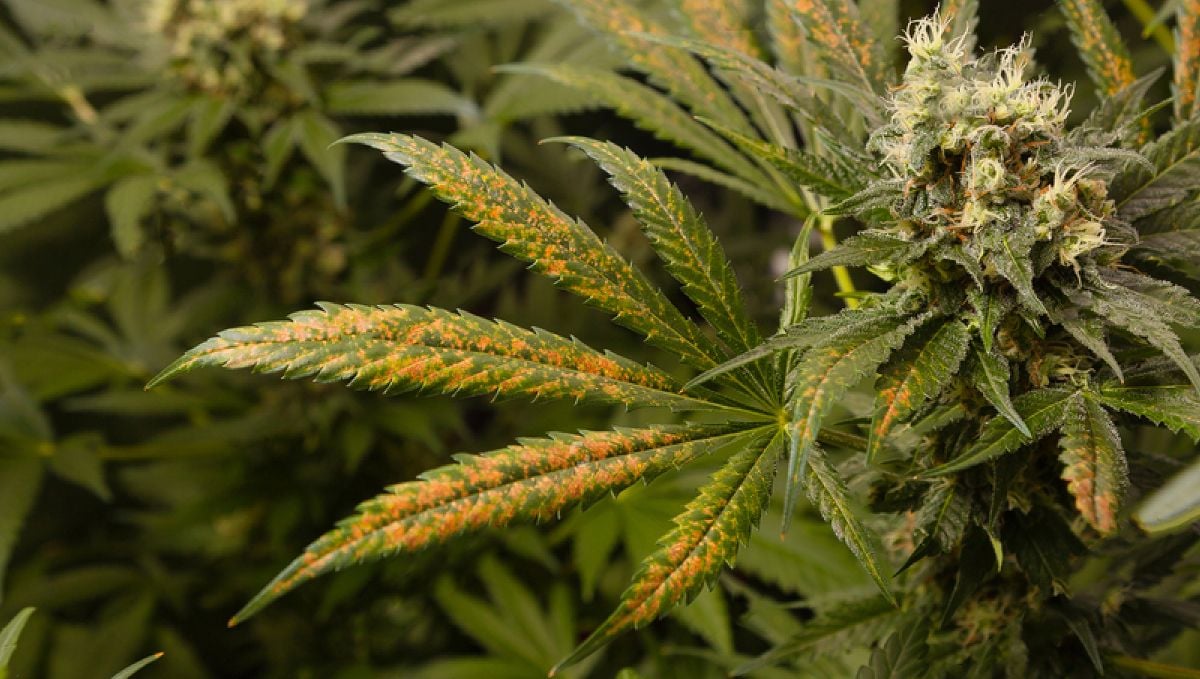
Nutrient Availability and the Importance of Soil pH
Soil pH plays a significant role in the availability of nutrients to cannabis plants. Nutrients can become more or less available to plants depending on the soil's pH level, which can lead to deficiencies or imbalances. The optimal pH range for nutrient absorption in cannabis plants grown in soil is between 6.0 and 6.5. For hydroponic or soilless media, the optimal range is between 5.5 and 6.0.
To maintain the proper pH level in your growing medium, use a pH meter to regularly test the soil or nutrient solution. Adjust the pH using pH up or pH down products as needed, and monitor the plant's response to ensure optimal nutrient availability.
Nutrient Deficiency Identification and Correction Strategies
When dealing with nutrient deficiencies, it is crucial to correctly identify the affected nutrient and take appropriate corrective action. Here are some strategies to help you identify and correct nutrient deficiencies:
- Examine the plant's overall appearance: Observe the plant's color, growth pattern, and leaf structure. This can help you determine which nutrient might be deficient or in excess.
- Identify the affected plant parts: Nutrient deficiencies often manifest in specific plant parts, such as new or old leaves, stems, or roots. Determining which parts are affected can help narrow down the possible nutrient deficiency.
- Compare symptoms with known deficiency symptoms: Refer to guides, like the one provided in this article, to compare your plant's symptoms with known nutrient deficiency symptoms. This can help you pinpoint the exact nutrient that is lacking.
- Test the growing medium and water: Testing the pH, nutrient content, and electrical conductivity of your growing medium and water can provide valuable information about the nutrient availability in your system.
- Correct the deficiency: Once you've identified the deficient nutrient, take corrective action by adjusting your feeding regimen, soil pH, or growing conditions as needed. Monitor the plant's response to ensure that the deficiency has been corrected.
- Prevent future deficiencies: Implement the preventative measures discussed in this guide to minimize the risk of future nutrient deficiencies and maintain overall plant health.
The Role of Plant Genetics in Nutrient Uptake and Deficiencies
Plant genetics can also play a role in nutrient uptake and the susceptibility of cannabis plants to nutrient deficiencies. Different cannabis strains may have varying nutrient requirements, and some strains may be more prone to specific nutrient deficiencies or imbalances than others.
When selecting a cannabis strain to grow, consider the plant's nutrient requirements and its potential susceptibility to deficiencies. By choosing a strain that is well-suited to your growing conditions and nutrient management practices, you can minimize the risk of nutrient-related issues and ensure a successful harvest.
Nutrient Deficiency Recovery and the Importance of Timely Intervention
Timely intervention is critical when dealing with nutrient deficiencies in cannabis plants. The longer a deficiency persists, the more significant the potential impact on plant growth, yield, and overall health. Implementing corrective measures as soon as possible can help prevent long-term damage and ensure a successful harvest.
When treating nutrient deficiencies, it is essential to monitor your plants closely and adjust your corrective actions as needed. Be patient, as it may take some time for your plants to recover fully. In some cases, you may need to implement additional preventative measures, such as adjusting your growing conditions, to prevent future deficiencies.
The Impact of Nutrient Deficiencies on Cannabis Yield and Quality
Nutrient deficiencies can significantly impact the yield and quality of your cannabis harvest. Plants that suffer from nutrient deficiencies may experience stunted growth, reduced flower production, and decreased potency. In severe cases, nutrient deficiencies can even lead to plant death.
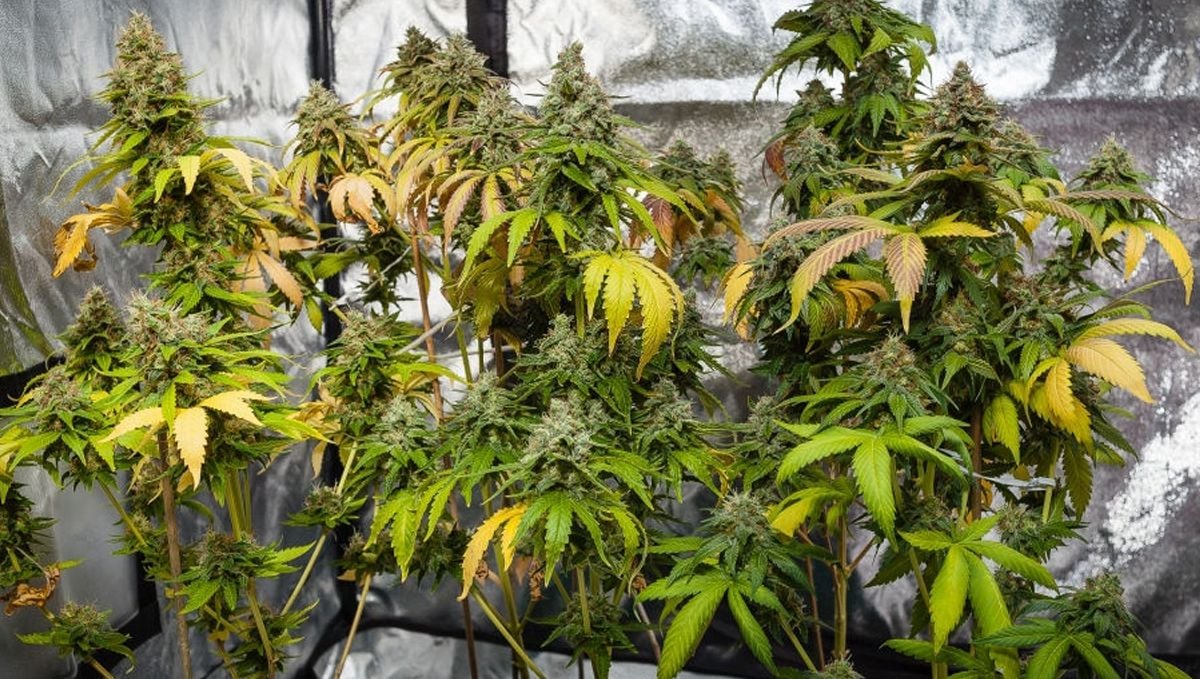
By addressing nutrient deficiencies promptly and maintaining a proper nutrient balance throughout the entire growing cycle, you can minimize the impact of nutrient-related issues on your cannabis yield and quality. Implementing the preventative measures and corrective strategies discussed in this guide can help you maintain healthy, productive cannabis plants and achieve a successful harvest.
Organic vs. Synthetic Fertilizers for Cannabis Plant Nutrition
When it comes to providing the necessary nutrients for cannabis plant growth, both organic and synthetic fertilizers have their advantages and disadvantages. Understanding the differences between these two types of fertilizers can help you make an informed decision on which is best suited for your specific growing conditions and preferences.
Organic Fertilizers
Organic fertilizers are derived from natural sources, such as plant and animal waste, and can help improve soil structure and fertility. Some benefits of using organic fertilizers include:
- Improved soil structure and water retention
- Support for beneficial microorganisms
- Gradual nutrient release, minimizing the risk of nutrient burn
- Lower environmental impact
However, organic fertilizers also have some disadvantages:
- Nutrient content can be variable and harder to control
- Nutrients may take longer to become available to plants
- Potential for pests and diseases if improperly composted
Synthetic Fertilizers
Synthetic fertilizers are manufactured from inorganic sources and are designed to provide specific ratios of nutrients. Some benefits of using synthetic fertilizers include:
- Precise control over nutrient content and ratios
- Rapid nutrient availability to plants
- Consistent nutrient content
However, synthetic fertilizers also have some disadvantages:
- Can cause nutrient burn if applied incorrectly
- May contribute to environmental pollution
- Do not improve soil structure or support beneficial microorganisms
When choosing between organic and synthetic fertilizers, consider your growing conditions, nutrient management preferences, and environmental impact. Both types of fertilizers can be effective in providing the necessary nutrients for cannabis plant growth, but each has its unique advantages and drawbacks.
The Importance of Proper Watering and Irrigation for Nutrient Uptake
Watering and irrigation play a critical role in nutrient uptake and overall cannabis plant health. Proper watering practices can help ensure that your plants receive the nutrients they need, while also preventing issues such as root rot and nutrient burn. Here are some essential watering tips for promoting healthy nutrient uptake in cannabis plants:
- Water deeply and infrequently: Deep, infrequent watering encourages the development of a robust root system, which can improve nutrient uptake. Water your plants thoroughly, allowing the water to reach the entire root zone, and wait until the soil is partially dry before watering again.
- Avoid overwatering or underwatering: Overwatering can lead to root rot and poor nutrient uptake, while underwatering can cause nutrient deficiencies and reduced growth. Monitor your plants closely and adjust your watering schedule as needed to maintain the proper moisture level in your growing medium.
- Use quality water: The quality of the water you use can impact nutrient availability and overall plant health. Ensure that your water is free of contaminants and has an appropriate pH level for cannabis plant growth.
- Implement a proper irrigation system: A well-designed irrigation system can help ensure consistent water delivery and nutrient availability. Consider using drip irrigation or other efficient watering methods to maintain optimal moisture levels in your growing medium.
By following these watering tips, you can support healthy nutrient uptake in your cannabis plants and prevent nutrient-related issues.
Closing Thoughts
Understanding cannabis plant nutrition and recognizing the signs of nutrient deficiencies is essential for every grower. By providing your plants with the appropriate nutrients and maintaining a proper growing environment, you can prevent nutrient deficiencies and ensure a healthy, high-quality harvest. Keep this comprehensive guide handy as a reference to help you identify and treat nutrient deficiencies in your cannabis plants, and ultimately, outrank the competition.
In this extended version, we will delve deeper into the importance of proper cannabis plant nutrition, explore additional nutrient deficiencies, and discuss more preventative measures to maintain the overall health of your cannabis plants.








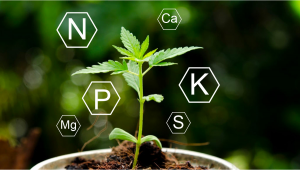
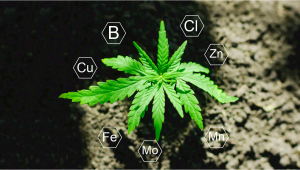

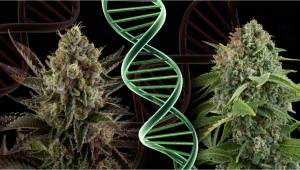
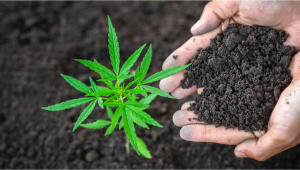


Comments